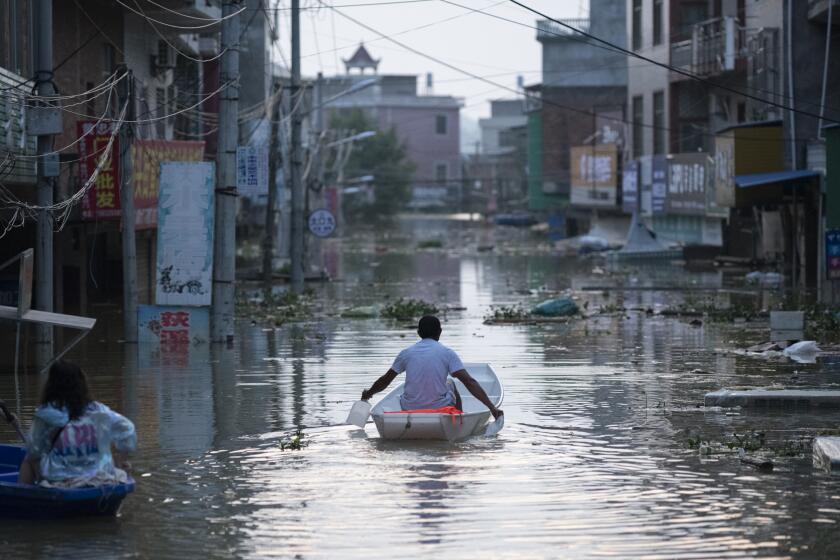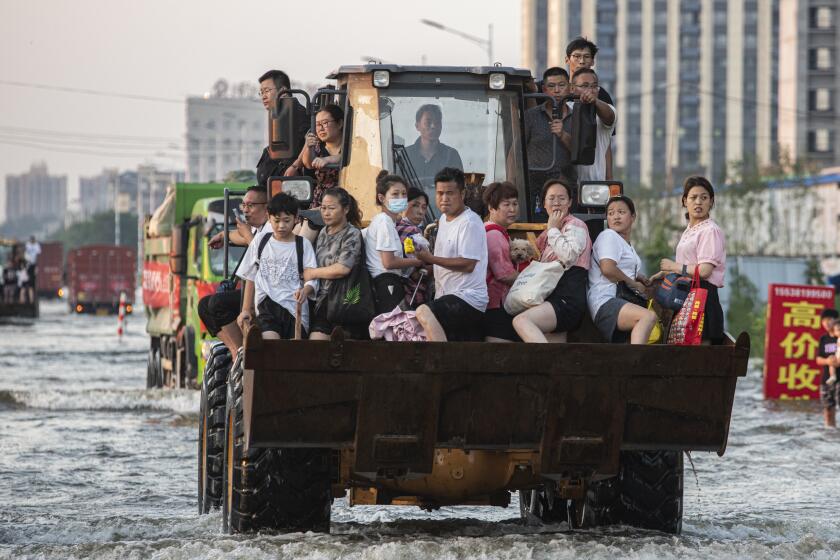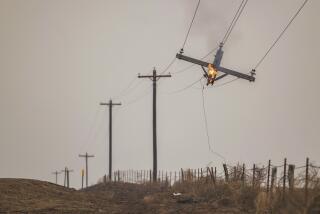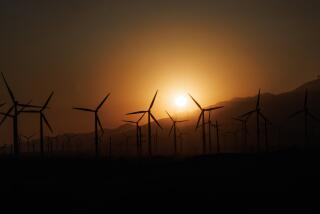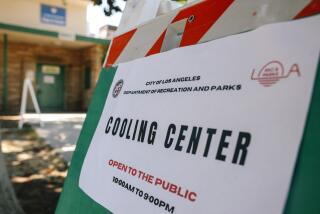This summer’s disasters show climate change is very much ‘a rich-country problem’ now

As the world staggers through another summer of extreme weather, experts are noticing something different: 2021′s onslaught is hitting harder and in places that have been spared global warming’s wrath in the past.
Wealthy countries including the United States, Canada, Germany and Belgium are joining poorer and more vulnerable nations on a growing list of places suffering extreme weather events that scientists say have some connection to human-caused climate change.
“It is not only a poor-country problem — it’s now very obviously a rich-country problem,” said Debby Guha-Sapir, founder of the international disaster database at the Center for Research on the Epidemiology of Disasters at Catholic University of Louvain in Belgium. “They [the rich] are getting whacked.”
Killer floods hit China, but hundreds of people also drowned in parts of Germany and Belgium not used to being inundated. Canada and the Pacific Northwest of the U.S. had what climate scientist Zeke Hausfather called “scary” heat that soared well past triple digits on the thermometer, shattering records and accompanied by unusual wildfires. Now, Southern Europe is seeing unprecedented heat and fire.
And peak Atlantic hurricane and U.S. wildfire seasons are only just starting.
When what would become Hurricane Elsa formed July 1, it broke last year’s record for the earliest fifth-named Atlantic storm. Colorado State University has already increased its forecast for the number of named Atlantic storms. The National Oceanic and Atmospheric Administration will update its season outlook on Wednesday.
Developed countries are moving too slowly to slash greenhouse gas emissions and fight climate change.
For fire season, the U.S. West is the driest it has been since 1580, based on soil-moisture readings and tree-ring records, setting the stage for worsening fires if something ignites them, said UCLA climate and fire scientist Park Williams.
What happens with U.S. hurricane and fire seasons drives the end-of-year statistics for total damage costs of weather disasters, said Ernst Rauch, chief climate and geoscientist for insurance giant Munich Re. So far this year, he said, wealthier regions have seen the biggest economic losses.
When poorer countries are hit, they are less prepared and their people can’t use air conditioning or leave, so there’s more harm to human life, said Hausfather, climate director of the Breakthrough Institute. While hundreds of people died in the Pacific Northwest heat wave, he said the number would have been much higher in poor areas.
Madagascar, an island nation off East Africa, is in the middle of back-to-back droughts that the United Nations warns are pushing 400,000 people toward starvation.
Henan adheres to a familiar formula in Xi Jinping’s China: Authorities turn tragedy into triumph, while controlling victims’ narratives.
Although it’s too early to say that the summer of 2021 will break records for climate disasters, “we’re certainly starting to see climate change push extreme events into new territories where they haven’t been seen before,” Hausfather said.
The number of weather, water and climate disasters so far this year is only slightly higher than the average of recent years, said disaster researcher Guha-Sapir. Her group’s database, which she said is still missing quite a few events, shows 208 such disasters worldwide through July — about 11% more than the last decade’s average, but a bit less than last year.
Last year, the record-shattering heat that came out of nowhere was in Siberia, where few people live, but this year it struck Portland, Ore., and British Columbia, which is getting more Western media attention, Hausfather said.
What’s happening is “partly an increase in the statistics of these extreme events, but also just that the steady drumbeat, the pile on year-on-year ... takes its cumulative toll on all of us who are reading these headlines,” said Georgia Tech climate scientist Kim Cobb.
Toward a more sustainable California
Get Boiling Point, our newsletter exploring climate change, energy and the environment, and become part of the conversation — and the solution.
You may occasionally receive promotional content from the Los Angeles Times.
“This pattern of recent Northern Hemisphere summers has been really quite stark,” said climate scientist Peter Stott of the University of Exeter, in southwest England.
While overall temperature rise is “playing out exactly as we said 20 years ago, ... what we are seeing in terms of the heat waves and the floods is more extreme than we predicted back then,” Stott said.
Climate scientists say there is little doubt climate change from the burning of coal, oil and natural gas is driving extreme events.
Aside from dramatic floods and fires, heat waves are a major risk to prepare for in the future, Guha-Sapir said.
“It’s going to be a very big deal in the Western countries because the most susceptible to sudden peaks of heat are older people. And the demographic profile of the people in Europe is very old,” she said. “Heat waves are going to be a real issue in the next few years.”
More to Read
Sign up for Essential California
The most important California stories and recommendations in your inbox every morning.
You may occasionally receive promotional content from the Los Angeles Times.
